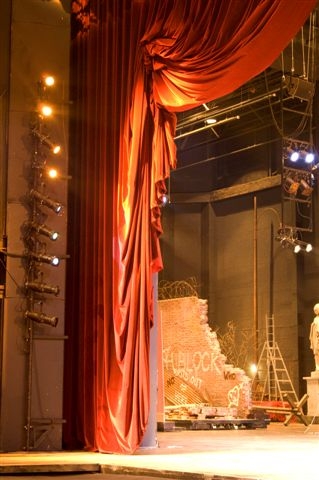Mandela Stage machinery upgrade

Background
Johannesburg’s Civic Theatre was built by the then city council in 1962, creating a high-profile landmark on the top of the Braamfontein Hill. The building was given a magnificent face-lift in the late ’80s, turning it into one of the most technically proficient theatres in the southern hemisphere.
The Theatre was closed for two years of renovations in 1987 costing R29 million, but it would be five years before the theatre reopened having cost R120 million. The backstage facilities and technical areas were overhauled, the main theatre’s height was increased, and electrical work, lightning and cooling and heating improved.
The theatre re-opened in September 1992. When this theatre re-opened its doors to the City of Joburg, it was not only the most modern and technically advanced theatre in Africa, but also in the world.
On 21 January 2009 the Civic Theatre was rebranded the Joburg Theatre.
The Need to Upgrade
The stage machinery was installed by AEG in 1990, and the life span of this equipment is 15 years. After 27 years, there was an urgent need to upgrade the stage machinery for the Mandela stage.
The spares required to maintain the old stage equipment was obsolete and there is no replacement equipment available anymore. Other problems the maintenance team faced included the fact that the computers required to reload the processor units (PLCs) had to be 386 DX computers, running a DOS operating system. The computers themselves were problematic. The software for the controlling units was not supported anymore.
It was becoming more and more challenging to use the old technology for even the most simple of effects.
What has been done?
The upgrade started in August 2018 with the upgrade of hardware for various parts of stage equipment. Because there were still shows taking place on stage, the upgrading had to take place in such a way that most of the equipment could still be used. Once a change in the hardware took place, the equipment had to be put back in service before the next production took place. Therefore only some stage equipment was upgraded. The contractors then moved on to the upper machinery.
In the last two years the contractors managed to make hardware changes to about 85% of all the stage machinery. The biggest part though, is the software development and the implementation thereof.
The stage lifts are done and the hardware upgrade is complete. The software for the stage lifts was completed by the end of July 2021. The control desks for the backstage wagon and the side stage wagons were also fitted and wired into the system at the end of August 2021.
What can Patrons expect?
Most of the upgrades are processed in the background and from a patron’s view not much would appear to change. However, producers and technical staff will have the benefit of using the upgrades for maximum effect. Patrons will be able to see the magic of what producers can dream up with the new technology.
Some of the possibilities now include:
- A Mexican wave which can be programmed for the stage lifts and the battens (fly bars/ hanging bars). These can work independently or be synchronised.
- As the back stage wagon moves from the stage, as each lift is cleared, that lift can be moved up or down.
- There is a staggered start function which will be visually very stimulating. The fly bars and various stage equipment can start moving at different times to create a movement of stage equipment one after the other.